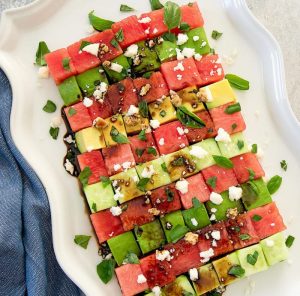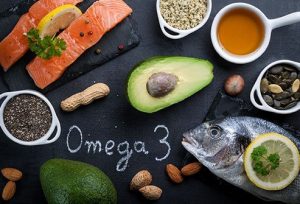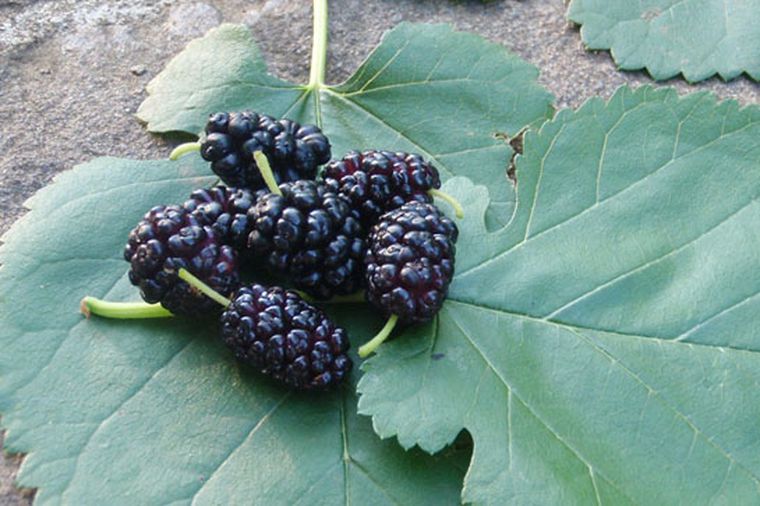Right foods to lower triglycerides
Triglycerides are the most common type of fat that has many health effects. Triglycerides are a type of fat in foods and your body that breaks down fat in food and stores it as fat in triglycerides. You use this fat to make cholesterol, so the more you have, the higher your cholesterol level.

List of foods to lower triglycerides
Here is a list of the best foods to help lower triglycerides:
Use of cereals
Wholemeal bread is pasta, brown rice, foods with complex carbohydrates and fiber. For example, a cup of cooked oatmeal provides 4 grams of fiber.
Whole grains also provide some protein and are generally low in fat and calories. Consumption of six or more per day is recommended.
Use beans and peas
Beans and dried peas are excellent sources of protein and fiber. They should be replaced with saturated fats and cholesterol. Dried beans and legumes can be used in delicious, nutritious foods, and some of the minerals in them help lower harmful cholesterol levels.
Fruits and vegetables
It is recommended to eat 2 to 4 servings of fruits and 3 to 5 servings of vegetables a day to reduce bad cholesterol. Apples, grapes, strawberries, and citrus fruits are rich in pectin, a soluble fiber that lowers bad cholesterol.
As a consultant, vegetables provide good fiber and nutrients such as lipoic acid and vitamins. Vegetables can reduce this fat level, including potatoes, mushrooms and tomatoes, broccoli, spinach, and many more.
Linseed
Consumption of omega three and omega six is associated with a reduction in chronic diseases. The researchers found that consuming these fatty acids in a ratio of 4 to 1 also helps reduce cardiovascular disease.
To achieve this, you need to increase your omega-3 intake. Flaxseeds are rich in omega-3 fatty acids. This means that two tablespoons of flaxseed have about 133% of the daily omega-3 requirement.
But you have to grind and grind flaxseed so that the body quickly absorbs omega-3. Flax is rich in fiber and helps lower cholesterol.
Eat fish
Eating fatty fish is very important for heart health because it is rich in omega-3 fatty acids. The American Heart Association recommends eating two servings of fatty fish a day.
For example, fatty fish include salmon, halibut, salmon, mackerel, sardines, and tuna.
Avoid frying them in saturated fats. It is better to eat them cooked or grilled. Shrimp are also high in cholesterol, but you can eat them occasionally.
olive oil
Olive oil, which is low in triglycerides, is an excellent alternative to saturated fats. One of the benefits of olive oil is lowering bad cholesterol and maintaining good cholesterol.
However, olive oil is also high in calories, so eating more than two tablespoons a day is good for heart health and lowering cholesterol.

Egg white
Egg whites are cholesterol-free, so they are often eaten without worries. Substitute egg whites for whole eggs.
In total, one egg contains 215 mg of cholesterol and limit egg yolk consumption to once a week.
Lean meat and poultry
You can eat 140 grams of lean meat and chicken daily. Lean meat is rich in protein, rich in absorbable iron, and an excellent source of zinc and vitamin B12.
Studies show that eating lean meats can help maintain iron stores in postmenopausal women. Chicken and turkey are good sources of lean meat and are somewhat ironic.
Peeling them and removing the underlying layers of fat reduces the amount of fat. Cook lean meats so you don’t have to add saturated fat.
Milk and dairy products
Milk and dairy are essential sources of protein, calcium, phosphorus, and vitamin D. Low-fat milk and other low-fat dairy products have more protein and calcium than high-fat dairy. According to research, skim milk or one percent fat, low-fat cheese, 1% cream cheese, and low-fat yogurt are good choices.
Nuts
Nuts such as walnuts, almonds, pistachios, and other ingredients help lower cholesterol and heart health. Because they are high in calories, do not eat more than 42 grams per day.
How to lower triglycerides by choosing the right foods:
The good news is that only by choosing the right food options can we reduce triglycerides by 20 to 50 percent.
Breakfast foods to lower blood triglycerides:
Combine apples and walnuts
Simultaneous consumption of apples and walnuts is recommended to lower blood triglycerides.

Combine watermelon and avocado
Watermelon is also rich in omega-3 and omega-6 fatty acids. The compounds that the body seriously needs. Consuming these two fruits simultaneously, large amounts of fiber, potassium, magnesium, and vitamins Center the body, and the presence of all of this helps reduce this blood lipid.
Use these five strategies to lower your triglycerides and your risk of heart disease:
Use less sugar in foods and beverages.
Sugar-rich foods mostly include sugary drinks, fruit juices, cookies, breakfast cereals, sweet yogurt, chocolate, ice cream, and candy.
It is recommended to limit your added sugar intake to less than 100 calories or six teaspoons per day for women and 150 calories to 9 teaspoons per day.
Consumption of added sugar with triglyceride content is 10 to 15% higher.
Fructose is often found in large amounts in sugary drinks, candy and cookies, cakes, and commercial cakes. Fructose is not mentioned on the nutrition label, but it reduces fructose by reducing the total amount of sugar added to foods.
Agave nectar and honey are familiar sources of fructose and are also sources of added sugar. Fructose is found naturally in fresh, frozen, or canned fruits but at deficient levels and does not increase triglycerides.
Include a Mediterranean diet with plenty of vegetables, fruits, and whole grains in your diet
Protein sources such as chicken and seafood, and olive oil instead of other fats have been shown to reduce triglyceride levels by 15%. The goal is to eat vegetables and fruits at least five times a day.

Choose healthy fats
Instead of bad fats like butter, use healthy fats like olive oil, canola oil, and sunflower oil. Eat saturated fats such as cheese, fatty beef, mutton, mutton, chicken skin, and fried foods.
Cut down on trans fats in fried foods such as fries, cookies, cakes, and biscuits.
Choose foods high in fiber.
Instead, eat whole grains, brown rice, oats, and white flour-based foods. If you are overweight or obese, losing 5 to 10 percent of your weight will reduce it by 20 percent.
Omega 3 fatty acids
Seafood or seafood supplements are recommended by doctors and can lower triglycerides by 25 to 30 percent.
Omega-3 fatty acids are found in non-seafood such as canola oil, chia seeds, flaxseed, soybeans, and walnuts but are chemically different from omega-3 fatty acids found in seafood.
9 steps to lower triglycerides:
Many of the things you do to improve your overall health also significantly lower your triglyceride levels.
Lifestyle changes, such as diet and weight loss, can also significantly lower your triglyceride levels.
Weight Loss
If you are overweight, losing 5 to 10 percent of your body weight will lower your triglycerides by about 20 percent.

Stop consuming sugar
People who lower their blood sugar by up to 10 percent a day also have low triglyceride levels. It is recommended to consume only 5% of your sugar calories daily.
This means that more than 150 grams (9 teaspoons for men) and (100 grams for six teaspoons for women) are harmful.
Since the largest sugar source in the diet is sugary drinks and other sugary drinks, one way to limit sugar intake is to reduce the consumption of drinks to 3 cans per week.
Increase fiber intake
Instead of consuming sugar and other processed carbohydrates, focus on eating high-fiber foods such as vegetables, fruits, and whole grains.
Limit fructose intake
Studies have shown that high fructose intake is a type of sugar that increases it. Because regular brown sugar is high in fructose, you should limit both to lower triglycerides.
Even fructose, which is found naturally in fruits, raises triglycerides. You need to consider the types of fruits you eat. Dried fruits such as raisins and dates have more fructose, while peaches, grapefruits, strawberries, and bananas have relatively less fructose.
To reduce this fat, limit your intake of total fructose to 100 grams per day.
Have a relatively low-fat diet
People with high triglycerides are advised to consume about 25 to 35 percent of their daily fat.
Replacing low-fat dairy products with high-fat ones may help lower triglyceride levels. For a person who consumes about 2000 calories a day, 67 grams of fat per day is appropriate. You can read the label on the product to see how much it consumes.
The type of fat you consume
Minimize saturated fats in red meat, butter, cheese, milk, coconut, and palm oil, and reduce trans fats as much as possible. Replace trans fats with healthy unsaturated fats.
Examples of unsaturated fats are corn oil, soybean oil, and olive oil. Although unsaturated fats lower cholesterol and triglycerides, they are high in calories, so if you are overweight, your cooking may prevent overeating.

Include omega-3 fatty acids in your daily diet
Fatty fish such as salmon, herring, sardines, and salmon contain fatty acids, which is right for you. Get the benefits; it is recommended to eat fatty fish at least twice a week.
If you already have high levels of this fat in your body, you can also use omega 3 capsules. However, capsules should be prescribed under a doctor’s supervision, as too much omega-3 can cause blood clots.
Sport
At least 30 minutes of moderate physical activity most days of the week may reduce it, and exercise will be an essential part of your weight control.
Take triglyceride medications
If your triglyceride is too high (500 mg or more), your doctor may prescribe medications to reduce it, such as niacin, omega-3, or statins.
Also Read:
Learn about the unique benefits of asparagus










